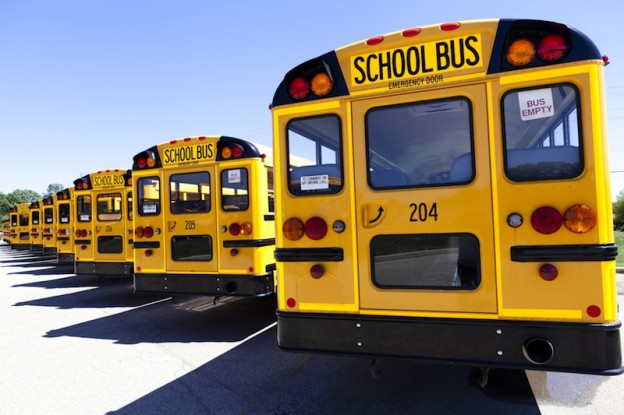Duty to Protect Students and Staff
Schools have a duty to protect students and staff from harm. They have an expectation that when participating in an educational program at the school or a school-sponsored event, that the school has acted reasonably and appropriately to protect them. With that in mind let’s examine some issues around the recent Massachusetts teacher murder.
In order to provide this protection, schools develop and implement safety plans, assign school resource officers, teach staff on appropriate staff-student relationships and contacts, develop and implement anti-harassment and bullying policies as well as implement other measures such as installing metal detectors at school entrances and quality surveillance camera systems in hallways and classrooms.
The school budget and the budget of other agencies such as the local police ultimately affect the level of security that is provided. At some schools there is a recognized need for a metal detector at the entrance because of past history of offenses, but more often than not schools do not have the money to purchase and maintain such a system. When a student or an intruder brings a weapon into the school, can the school be held liable if someone is injured or murdered? When there is a determination by a local board of education and police department that assigning a school resource officer (police officer on school grounds) to the school will protect students and staff but there is a shortfall in funding and someone is unfortunately assaulted, will the school or local police department be held liable? Once a school makes a cogent decision to act to protect the safety of students and staff (via installation of reliable safety equipment or assigning a school resource officer on site), that decision can be seen as an admission that those intercessions (or interventions) are likely to curtail bad behavior. However, schools cannot generally be held liable for budgetary decisions leading to a change in safety procedures but they may have to show if they had the resources they were not just reassigned. If there is a lawsuit the court will determine whether the school was justified in altering the safety measures because of budgetary constraints. If not, the school may be held negligent for failure to provide adequate safety and supervision leading to the cause of the injury.
Danvers High School Tragedy
Like so many other schools around the country, Danvers High School outside of Boston is a place that provides its students with a tons of opportunity to excel. Each student is assigned a counselor who makes himself/herself available if a personal crisis arises and the student needs guidance and support. However, this only works, as we have seen in the numerous school shooting cases recently, when the school recognizes a student in trouble and acts on it or when a troubled student initiates contact with a caring adult at the school and gets help instead of resorting to extreme measures. Kids slip through the well-intentioned programs and supportive services offered by schools and can end up hurting themselves as well as others. Classmates said that Philip Chism, the student who killed his teacher, Colleen Ritzer in the teacher’s bathroom at Danvers High School, kept to himself but was liked by his soccer teammates. He was quiet and was not a troublemaker according to news media reports. There may not have been anything that a teacher or counselor would have picked up on that would give reason to believe Philip may have been troubled and distressed.
The Danvers High School offers “help sessions” for students, which are available in the afternoons after dismissal for extra help and make-up work. According to school policy, if a teacher asks a student to return for extra help, the student must return. From the information revealed to date, it appears that Ms. Ritzer asked Philip to remain after the final class of the day, possibly for a help session. It would seem like she was reaching out to him to provide what the school believes to be an opportunity for a student to do his/her best. The high school was assigned a School Resource Officer, an officer who was stationed at the school by the local police department to perform police duties and at the same time, become acquainted with the student population. However, due to budgetary problems in the police department, the officer was pulled from his position and reassigned before the murder of Ms. Ritzer. There was no officer in the building when Philip followed Ms. Ritzer to the teacher’s bathroom, a restricted area for students, and killed her. One wonders if the presence of an officer would have prevented this Massachusetts teacher murder?
The high school has a reasonable policy that prohibits firearms, knives, sharp objects, any type of weapon, or facsimile including water guns and sling shots. Philip murdered Ms. Ritzer with a box cutter, a prohibited weapon according to school policy. If a teacher noticed the box cutter and didn’t act to remove it from Philip and he used it in the murder of Ms. Ritzer, is the school liable? What good is a policy if no one saw Philip with a box cutter in the first place? Can the school be liable for something for which it had no notice? Students bring all kinds of weapons into school undetected. Children bring their parent’s guns to school, carry knives and, as in this case, box cutters, all undetected by school officials. If there is no reason to search a student for contraband or illegal weapons the school is not justified in singling out a student without cause. However, if the school has a metal detector and all students must pass through it on the way to class, then they are all being treated equally.
Education Expert’s Approach to MassachusettsTeacher Murder
As a school liability expert witness I am frequently asked to determine if the schools met the standards of care and if they could have done anything to prevent an accident or wrongful death from happening. In this case, the main question is whether Danvers High School, through its administration and/or employees, acted reasonably and within the professional standard of care in the field of education, administration and supervision under the circumstances? Did the school breach its duty of care? If so, did that breach significantly contribute to the murder of Ms. Ritzer?
I use the following questions to begin the analysis:
- Did Philip exhibit any behavior that would have caused a reasonable staff member concern and a referral to a counselor or other services?
- Was there a policy that teachers should not be alone with students in their class after school and was that policy breached?
- Was there a policy that following a help session students must be escorted out and leave the building?
- What was the level of supervision during this time of the day and was it reasonable?
- Would the presence of a school resource officer or other staff person in the hallway of Ms. Ritzer’s classroom have prevented the murder?
- Could the teacher’s bathroom been secured with a lock? And, if so, would this have prevented Philip from following Ms. Ritzer into the room?
Bear in mind, these questions are only the beginning of a far deeper analysis to assess responsibility or determine whether anything different could have been done to protect both students and staff. As we begin to investigate, more information will likely surface and more questions will need to be answered and addressed. Even with the best intention to protect students and staff, it isn’t always possible to do so. Courts have acknowledged that schools cannot 100{d61575bddc780c1d4ab39ab904bf25755f3b8d1434703a303cf443ba00f43fa4} guarantee the safety of all students and teachers while going about their lives on the school grounds, but they can be held liable for injury or death resulting from negligence based on the legal principle of duty of care. On the other hand, when a school acted reasonably and within the professional standard of care the school may not be held accountable for unfortunate injuries or death.
Recent blog posts from Dr. Dragan:
Wrongful Death Lawsuits Against Schools and Agencies: What Attorneys Need to Know








